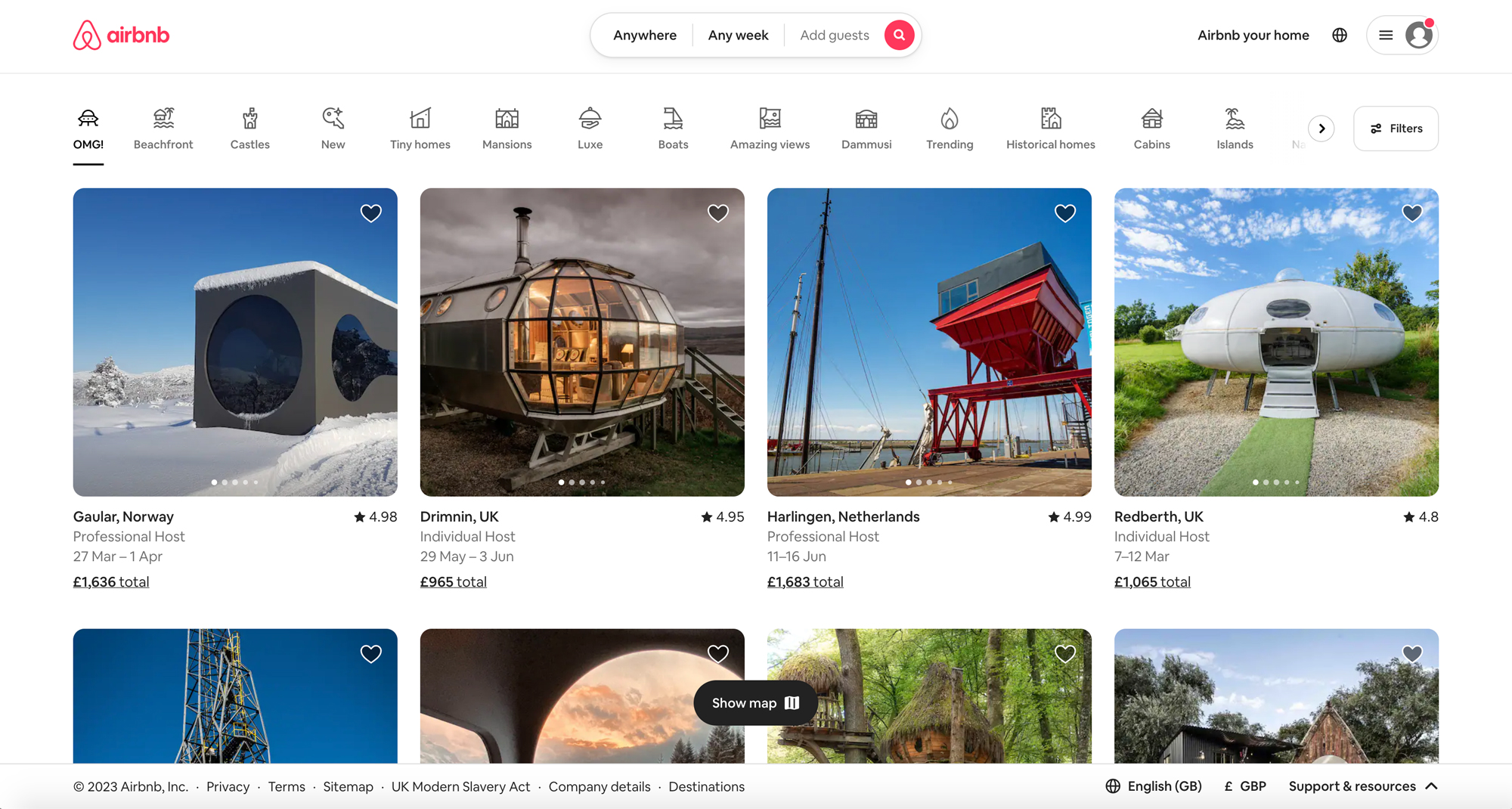Website credibility refers to the extent to which users perceive a website as trustworthy, authoritative, and reliable.
It’s a crucial factor in building trust and establishing a positive reputation with users.
With so many businesses operating online, users need to be able to distinguish between legitimate and fraudulent websites.
A website with high credibility is more likely to attract and retain users, drive engagement, and increase conversions.
We also know that lack of trust is one of the main reasons why a website visitor does not convert and carry out the desired action on your website.
With this in mind, a website's design can have a significant impact on user perception and website credibility.
A well-designed website:
- Creates a positive first impression
- Enhances the user experience
- Can lead to increased engagement, conversions, and customer loyalty
The Psychology of Website Design and Credibility
The relationship between website design and user perception is a complex one.
Why can nothing ever be easy!?
Users form an opinion about a website within seconds of landing on it.
This first impression is based on the visual appeal, navigation, and content organisation of the site.
A website that is well-designed creates a positive first impression and establishes credibility with the user.
The Role of Visual Appeal, Navigation, and Content Organisation in Establishing Credibility
Visual appeal is an essential element of website design.
A visually appealing website can create a positive emotional response in the user and enhance their experience on the site.
At the same time, poor design can create a negative emotional response and damage the user's perception of the brand.
Navigation is another critical element of website design that can influence user perception.
A well-organised website with intuitive navigation makes it easy for users to find what they’re looking for.
It’s essential to remove any friction points between you and your website visitors (your potential customers).
For this, you need your visitors to be able to easily find what they’re looking for on your website.
If you do this correctly, it will enhance their experience and establish credibility with the brand.
On the other hand, a poorly organised website with confusing navigation can lead to frustration and damage the user's perception of the brand.
People nowadays have lower attention spans than ever before.
They aren’t going to have the patience to navigate your website.
If they can’t find what they’re looking for with ease, they’ll just bounce and find it somewhere else.
Content organisation is also an important element of website design that can affect user perception.
A well-organised website with clear and concise content is easier for users to understand and engage with.
The content needs to be well laid out, and have breathing space.
Imagine visiting a website that just had content everywhere and no clear structure.
You wouldn’t know where to click or where to go on the website.
You’d be overwhelmed and confused.
And as they say, a confused customer never buys.
Try not to have rows and rows of text, make the content easily digestible for your website visitors.
How Colour, Typography, and Imagery Affect User Trust and Perception
Colour psychology is a well-known aspect of website design.
Colours can evoke specific emotions and influence user trust and perception.
For example, blue is often associated with trust and reliability, while red is associated with excitement and urgency.
Choosing the right colours for a website can enhance the user's emotional response and establish credibility with the brand.
For example, if your business is a spa or massage practice, you want to avoid a colour like red for the reasons mentioned.
Instead, it would make more sense to focus on soft pastel colours like a soft orange or soft green shade.
Typography is another important element of website design that can influence user perception.
Using appropriate fonts that are easy to read and convey the brand's personality can enhance the user's experience and establish credibility with the brand.
Imagery is also a crucial element of website design that can affect user perception.
Using high-quality images that are relevant to the brand and message can create a positive emotional response in the user and enhance credibility.
Ideally, you want your images to be unique - not stock images.
However, if you’re not able to get unique images, then stock images are certainly better than no images!
Just make sure that the stock images are related to your content.
The Elements of Credible Website Design
The elements of credible website design include:
- Responsive design & mobile optimisation
- User-centred design
- Usability testing
- Clear calls-to-action
- Contact Information
- Social Proof
We will explore the essential elements of credible website design and how they can enhance user trust and perception.
The Importance of Responsive Design and Mobile Optimisation
More users are accessing websites on mobile devices than ever before.
Mobile has overtaken desktop as the most common device for browsing the internet.
Therefore, having a website that’s optimised for mobile devices is crucial.
Responsive design ensures that your website looks great and functions well on all devices, including smartphones and tablets.
Mobile optimisation also involves optimising website speed and performance on mobile devices, which enhances the user experience and establishes credibility with the brand.
The Role of User-Centred Design and Usability Testing
User-centred design involves designing a website with the user in mind.
This approach ensures that the website is easy to use and navigate, which enhances the user experience and establishes credibility with the brand.
Usability testing involves testing the website's usability with real users to identify areas for improvement and ensure that the website is user-friendly.
When carrying out usability testing, it’s essential to test on all devices - desktop, mobile and tablet.
Establishing Credibility Through Clear Calls-to-Action, Contact Information, and Social Proof
Clear calls-to-action are essential for guiding the user towards taking the desired action on the website.
Whether it is making a purchase, filling out a form, or reading the next page of content, a clear call-to-action can increase conversions and establish credibility with the user.
The last thing you want is a user reaching the bottom of your web page and then having nowhere else to go.
There always needs to be a call to action to guide them to the next stage towards the desired outcome.
Providing contact information, such as phone numbers and email addresses, is also critical for establishing credibility with the user.
This information provides transparency and allows users to contact the business with any questions or concerns.
Social proof, such as customer testimonials and reviews, is another essential element of credible website design.
Social proof enhances credibility by demonstrating that other users have had a positive experience with the brand.
The information and social proof provide a more human insight into your business.
No one wants to deal with faceless businesses anymore.
So by utilising these avenues, it can really help build the credibility of your brand.
If you want to go a step further you can include the faces of the members of your company or brand.
This also massively increases trust and credibility as potential customers can clearly see they’re interacting with a face, rather than a faceless company.
The Impact of Website Design on Search Engine Rankings
Website design not only affects user perception and credibility but also has a significant impact on search engine optimisation (SEO) and search engine rankings.
How Website Design Affects SEO and Search Engine Rankings
Search engines, such as Google, use complex algorithms to determine the relevance and authority of a website.
Website design can affect several factors that search engines consider when ranking websites.
For example, a well-designed website with a clear structure and easy navigation makes it easier for search engines to crawl and index the site's pages.
The use of appropriate HTML tags, such as H1 tags for headings and alt tags for images, can also enhance the website's relevance to search engine algorithms.
In contract, you want to avoid having a poorly designed website with broken links and duplicate content. These factors along with slow loading times are some of the main ways that can hurt your website's SEO and search engine rankings.
They also have an impact on your credibility and trust.
Think about if you were on an ECommerce website looking to buy something and came across a broken link on the website.
It would certainly make you think twice about making that purchase, particularly if you had never bought from that website before.
The Importance of Website Speed and Performance in Search Engine Optimisation
A website that loads quickly and performs well on all devices provides a better user experience and enhances credibility with the brand.
Search engines, such as Google and Bing, consider website speed and performance as important factors when ranking websites.
Best Practices for Designing a Search Engine-Friendly Website
Designing a search engine-friendly website involves following best practices for website design and optimisation. These include:
- Creating a clear site structure and easy navigation
- Using appropriate HTML tags and meta descriptions
- Avoiding duplicate content and broken links
- Optimising images and videos for fast loading times
- Implementing responsive design and mobile optimisation
- Prioritising website speed and performance
Case Studies of Credible Website Design
In this section, we will examine real-world examples of websites with strong credibility and effective design. We will analyse the design elements and strategies that contribute to website credibility and provide lessons learned and takeaways for website design best practices.

Example 1: Airbnb
Airbnb is a popular online platform that connects hosts with travelers seeking unique accommodations.
As you can imagine, a lot of work will have gone into their website's design.
Some of the factors that have made their website so credible and authoritative include:
- Visual appeal: The website's design is visually appealing, with high-quality images and videos that showcase the unique accommodations available.
- Navigation: The website's navigation is clear and easy to use, with a search bar prominently displayed at the top of the page.
- Content organisation: The website's content is well-organised, with clear headings and subheadings that make it easy for users to find the information they need.

Example 2: Slack
Slack is a communication and collaboration platform used by businesses and teams worldwide.
Their website's design incorporates several elements that contribute to its credibility, including:
- Visual appeal: The website's design is clean and modern, with a simple colour palette and high-quality images that showcase the platform's features.
- Navigation: The website's navigation is intuitive, with clear menus and buttons that make it easy for users to navigate the site.
- Calls-to-action: The website's calls-to-action are clear and prominently displayed, encouraging users to sign up for the platform.
Lessons Learned and Takeaways for Website Design Best Practices
From these case studies, we can draw several lessons and takeaways for website design best practices, including:
- Prioritising visual appeal and user-centred design to enhance credibility and trust with users.
- Ensuring clear and easy navigation to help users find the information they need quickly and easily.
- Incorporating strong calls-to-action to encourage users to take desired actions on the website.
- Using high-quality images and videos to showcase products and services effectively.
- Focusing on website speed and performance to enhance the user experience and improve search engine rankings.
It’s important that you have all these items above ticked off on your website.
At Ovii, our Belfast web design and digital agency, we’ve worked with countless clients to improve their website and brand credibility.
And we can say from experience that it’s about making sure all these items are ticked off.
Any gaps and areas left unchecked will result in a loss of trust, authority and ultimately credibility for your business.
And this results in a lower conversion rate.
But by following the items we’ve mentioned you can ensure that you have all bases covered.

